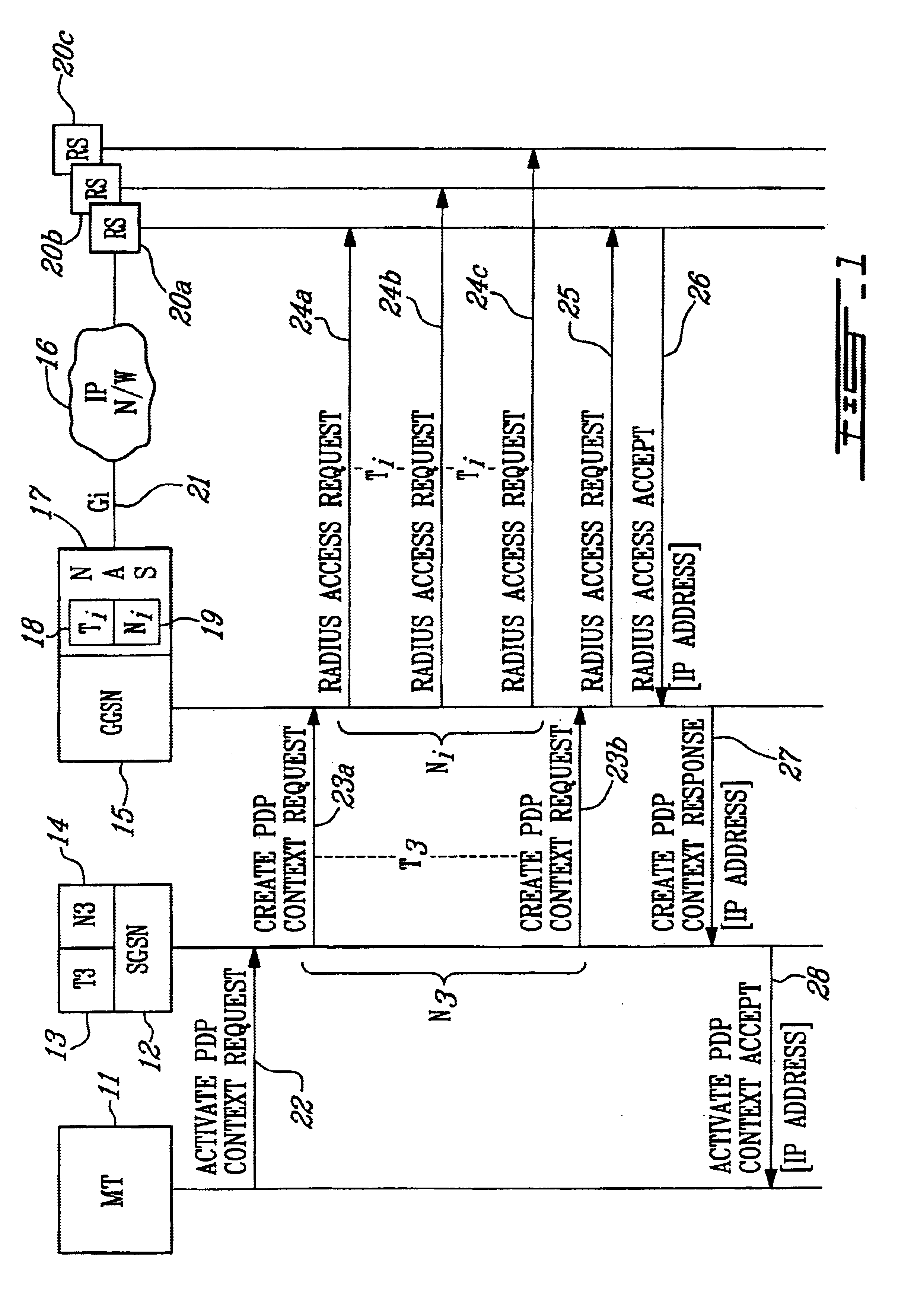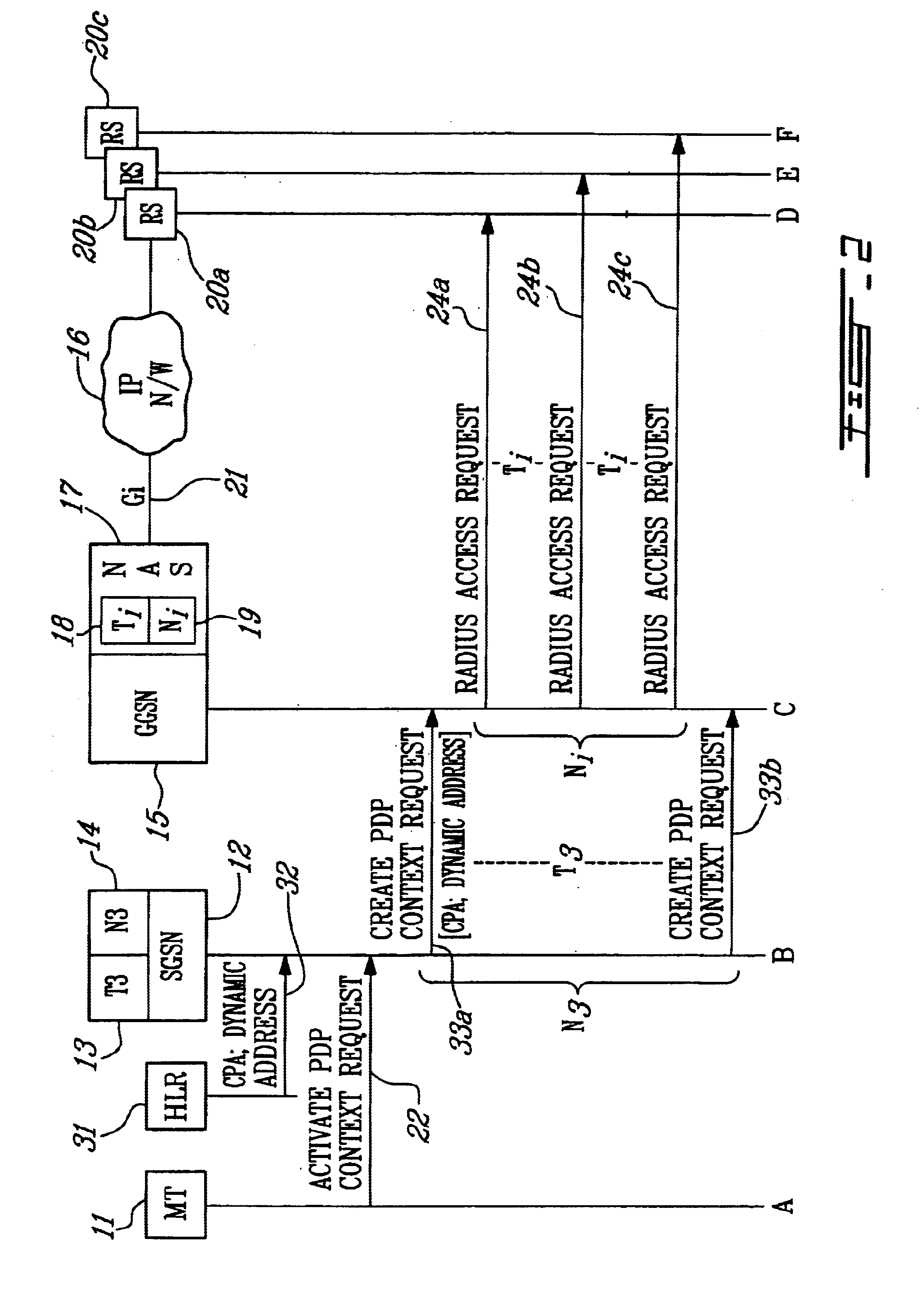Dynamic IP address allocation system and method
a dynamic allocation and ip address technology, applied in the field of telecommunications and data network systems, can solve problems such as server down or malfunction, scarce ip addresses, and ggsn may have exhausted its allocation of ip addresses
- Summary
- Abstract
- Description
- Claims
- Application Information
AI Technical Summary
Problems solved by technology
Method used
Image
Examples
first embodiment
FIG. 1 is a signal flow diagram illustrating the flow of messages when performing the method of the present invention to allocate an IP address to a mobile terminal. The components of the system of the present invention are illustrated across the top of the figure. A mobile terminal (M) 11 is served by an SGSN 12. The SGSN includes a timer (T3) 13 and a counter (N3) 14. The SGSN communicates with a GGSN 15 to gain access to an IP-based network 16. The GGSN includes a Network Access Server (NAS) 17 that connects to the IP-based network. The NAS includes a new timer (Ti) 18, and a new counter (Ni) 19. A plurality of Radius servers (RS) 20a to 20c belonging to an Internet Service Provider (ISP) are accessed by the GGSN over the Gi interface 21 in order to obtain an IP address for the MT.
The MT 11 sends an Activate PDP Context Request message 22 to the SGSN 12 to activate the PDP Context. The SGSN sets up T3 and N3 to control the time and number of Create PDP Context Request messages 23...
second embodiment
FIG. 2 is a signal flow diagram illustrating the flow of messages when performing the method of the present invention to allocate an IP address to a mobile terminal when the Radius server fails to provide an IP address. In the example shown in FIG. 2, the GGSN sends a second sequence of Radius Access Request messages 25a to 25c to the RS, and the RS fails to provide an IP address before Ti expires at 29 following Radius Access Request message 25c, which is the final message allowed by Ni. Once Ti and Ni have expired, the present invention provides an IP address to the MT utilizing the following procedures.
A new parameter called the Conditional PDP Address (CPA) parameter is stored in the MT's Home Location Register (HLR) 31 as part of the user subscriber data. The CPA parameter indicates whether the subscriber is entitled to a backup IP address in case of failure to obtain one over the Gi interface. If so, it is also used to determine whether the backup IP address is a private IP ad...
PUM
 Login to View More
Login to View More Abstract
Description
Claims
Application Information
 Login to View More
Login to View More - R&D
- Intellectual Property
- Life Sciences
- Materials
- Tech Scout
- Unparalleled Data Quality
- Higher Quality Content
- 60% Fewer Hallucinations
Browse by: Latest US Patents, China's latest patents, Technical Efficacy Thesaurus, Application Domain, Technology Topic, Popular Technical Reports.
© 2025 PatSnap. All rights reserved.Legal|Privacy policy|Modern Slavery Act Transparency Statement|Sitemap|About US| Contact US: help@patsnap.com



